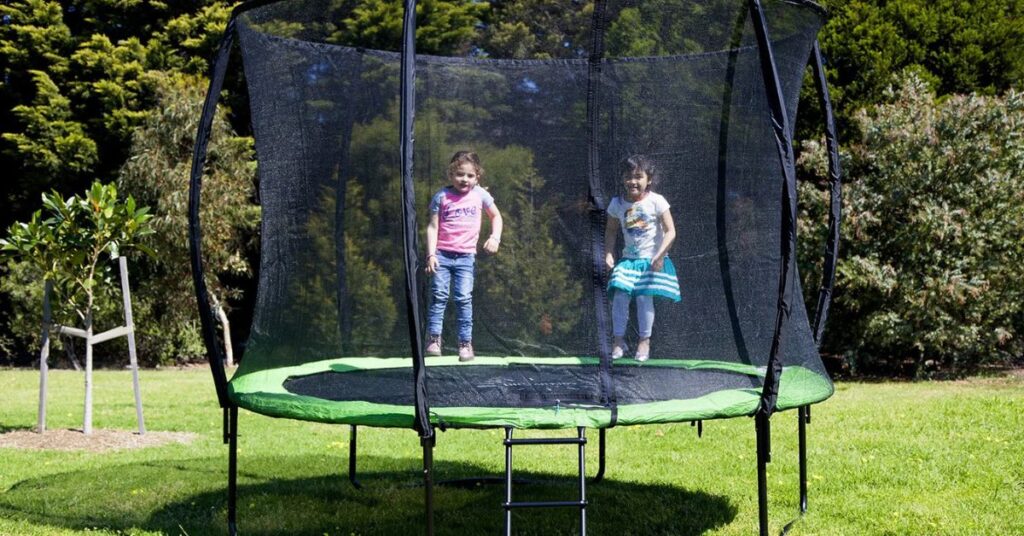A trampoline can transform any backyard into a lively play area but requires thoughtful placement to avoid safety hazards and clearance issues. Whether you’re exploring options among trampolines for sale or planning space around an existing unit understanding the dimensions and safety buffer zones is crucial. This guest post guides you through assessing yard layout determining clearances and adapting plans for round rectangular and oval trampoline models. With these insights you can choose the right trampoline type and position it for maximum enjoyment and minimum risk.
Assessing Your Available Yard Space
Begin by measuring your open lawn area end to end and side to side noting any nearby obstacles such as fences trees or garden beds. Trampolines should never sit closer than six feet to rigid structures to prevent accidental collisions. Sketch a simple layout marking potential trampoline footprints and buffer zones.
Consider ground slope and drainage patterns as well since water pooling under the frame can affect stability. If your yard narrows in spots adjust trampoline orientation or relocate obstacles like planters and playsets. A clear visual plan ensures you do not overcommit to a model that simply will not fit comfortably in your space.
Space Requirements for Round Trampolines
Traditional round designs provide uniform bounce performance but still demand sufficient clearance. A common six foot perimeter free of hard surfaces gives jumpers room to rebound safely back to the center. For a ten foot diameter trampoline you therefore need a total area of at least twenty two by twenty two feet.
Larger round models work under the same calculation so simply add twice the clearance distance to the frame diameter. Remember to leave room for maintenance access around the frame. Even if your yard feels tight you can achieve the required buffer by pruning low branches or replacing bulky planters with compact pots.
Space Requirements for Rectangular Trampolines
A rectangular trampoline often appeals to sports enthusiasts seeking higher bounce and directional performance. Because these models are longer on one axis clearance needs vary by side. Experts recommend eight feet beyond each short end and six feet past each long side to accommodate forward jumps and lateral rebounds.
For a fifteen by ten foot trampoline the ideal footprint spans twenty seven by twenty two feet. This extra room helps maintain safe trajectories toward the center. When surveying your yard be mindful of fencing lines or hedges that could interfere with side clearance and adjust placement accordingly.
Space Requirements for Oval Trampolines
Models marketed as oval trampolines combine the directional feel of rectangular designs with a more compact footprint. An oval trampoline typically demands eight feet beyond its curved ends and six feet at the flatter midsections.
If you choose an oval trampoline style you may enjoy a more elongated bounce zone but still require at least twenty four feet in length and sixteen feet in width for safe use.
Position the long axis along the flattest part of your yard and avoid uneven ground that could cause springs to wear unevenly. Proper siting ensures jumpers remain clear of hardscape and garden borders.
Ensuring Safe Clearance Around Your Trampoline
Adequate space is only half the equation. Regularly inspect the area around the frame to remove toys rocks and debris that could obstruct feet on exit. If your trampoline uses an enclosure system maintain at least two feet between the net supports and any rigid objects. A quality trampoline net not only prevents falls but also helps delineate safe boundaries. Keep low hanging branches trimmed and consider soft landscaping such as mulch or rubber tiles under the frame for added protection.
Using Accessories Without Compromising Space
Accessories like ladders and sun shades enhance comfort yet add to the required footprint. Opt for removable designs that you can detach when measuring or cleaning around the trampoline. Garden sunsails can substitute for permanent overhead structures and fold away when not in use. If you store items beneath the frame ensure they do not encroach into clearance zones. Planning storage racks off to the side or using wall hooks for accessories keeps your bounce area clutter free while preserving critical safety margins.
Final Thoughts on Trampoline Placement
Choosing and positioning the right trampoline depends on careful measurement and a commitment to safety. Whether you pick a classic round model or invest in a sporty rectangular design a well planned footprint delivers peace of mind for families and hosts alike. Take the time to map your yard survey obstacles and confirm clearance requirements before installation. With these steps you can create a backyard attraction that delights children and adults while minimizing risk.
Frequently Asked Questions
What is the minimum clearance needed around a trampoline?
Industry guidelines advise six to eight feet of open space beyond the frame on all sides depending on the trampoline shape and model. This buffer helps prevent collisions with nearby objects.
How do I choose the right trampoline size for my yard?
Measure your available lawn area then subtract at least twelve feet from the dimension to account for safety zones. Compare this resulting footprint with published trampoline dimensions before purchasing.
Can I place a trampoline near a fence or hedge?
It is best to maintain a clear space of six feet or more from fences hedges and walls. If space is limited consider trimming hedges or relocating the trampoline to a more open area.
Where can I find replacement nets and parts?
Replacement mats springs and high quality trampoline net options are available through authorized dealers and online outlets. Review product listings for compatibility before ordering.


